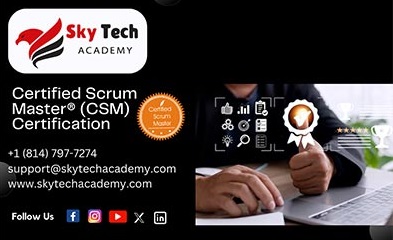Certified Scrum Master (CSM) Certification – Master Agile & Scrum Frameworks
The Certified Scrum Master (CSM) certification is a globally recognized credential designed for professionals looking to master Agile and Scrum methodologies. Offered by the Scrum Alliance, CSM validates expertise in Scrum principles, roles, and best practices, making it ideal for project managers, product owners, developers, and IT professionals. The certification covers key areas such as Agile values, Scrum roles, sprint planning, backlog management, and facilitating Scrum ceremonies. Earning a CSM demonstrates the ability to guide teams in Agile adoption, enhance collaboration, and drive efficient project execution. CSM is widely recognized across industries like software development, IT, healthcare, and finance, helping professionals secure roles as Scrum Masters, Agile Coaches, and Product Managers. Whether you're starting a career in Agile project management or seeking to enhance your leadership skills, CSM certification training equips you with the knowledge and credentials needed to excel in Agile environments and improve team performance.






